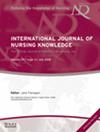Translation and psychometrics of the Persian version of the Good Nursing Care Scale in Iran
Abstract
Background and aim
Identifying and evaluating the strengths and weaknesses of nursing care provided to improve the quality of nursing care is increasingly emphasized, and it requires using valid tools in this field. This study aimed to translate and determine the psychometric properties of the Persian version of the “Good Nursing Care Scale” (GNCS-P).
Methods
The present study is a methodological study in which the psychometric dimensions of GNCS-P were studied from the perspective of 200 patients who were admitted to the hospitals of Ardabil University of Medical Sciences. After translating the original version of the scale, its validity and reliability were evaluated and data analysis was performed using statistical package for social science (version 16) and analysis of moment structures (version 24).
Results
The effect score of the item in the evaluation of face validity for each item was above 2.4. The content validity ratio for the scale was 0.88, and the content validity index tool was 0.86. The correlation of total instrument scores with the standard instrument was 0.839. According to the results of factor analysis, the values of factor loading of items were between 0.62 and 0.91, which were all significant. Therefore, the seven dimensions introduced in the main tool were approved. In addition, Cronbach's alpha results of 0.865 and correlation of 0.894 in the test–retest showed that the questionnaire has internal consistency and acceptable stability.
Conclusion
The Persian version of the GNCS-P has acceptable psychometric properties in the Iranian population and can be used as a valid tool in the areas of quality assessment of nursing care, education, and nursing research.
Implications for Nursing Practice
The results showed the validity and reliability of the tool and its usability as a valid tool in evaluating the quality of nursing care.

 求助内容:
求助内容: 应助结果提醒方式:
应助结果提醒方式:


